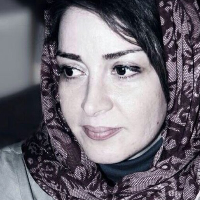The Function of Figure and Ground Principle in Reading Nima Yushij’s "Oh, Humans": A Cognitive Poetics Approach
Figure and ground are cognitive devices for text analysis, indicating a phenomenological relation between literature and human beings. So critical research by cognitive poetics approach, on one hand, includes the possibility of analyzing texts considering the author, text and reader simultaneously, although different traditions have emphasized on just one or two of them. On the other hand, it gives phenomenological value to the literary research for the reason that it is created based on body, mind and human life. The concepts of figure and ground were first introduced in Gestalt Theory, and they were later developed in cognitive poetics to make the comprehension of a text possible, as lack of figure in any text can lead to a flat reading. Figure could be created through repetition, unfamiliar naming, innovative metaphor, creative syntactic ordering, use of puns, inner rhyme in a text, or any other technique which results in deviations from the expected use of language. This paper draws on the function of figure and ground to analyze a poem by Nima Yooshij, entitled “Oh, Humans” through a cognitive poetics approach. It studied how analytical devices of cognitive theory with neurocognitive and psychological bases could explain the cognitive deviation from the Persian classic meter. Furthermore, it embodied a way that "the self" as a core of consciousness is interpreted through the structural arrangement of the words as well as "the other" as the historical memory in the background. Moreover, this poem is cognitively and structurally classified in three episodes based on the figure and groundchr('39')s usages, so the iconicity (similarity) of the form-meaning could reflect the absence of dialogue between the self and the other through discursive worlds. This proposes that the representation and recreation of the author-reader’s world through the form (structural arrangement) in a literary work equals the meaning that a text’s world tries to create. Therefore, the study of meaning is not disjointed from the form, that is, the cognitive conformity of form-meaning in this poem conceptualizes the self and the other, as it is conceptualized in the society.
Cognitive Poetics , Figure , ground , Nima Yushij , Oh , Humans
- حق عضویت دریافتی صرف حمایت از نشریات عضو و نگهداری، تکمیل و توسعه مگیران میشود.
- پرداخت حق اشتراک و دانلود مقالات اجازه بازنشر آن در سایر رسانههای چاپی و دیجیتال را به کاربر نمیدهد.


